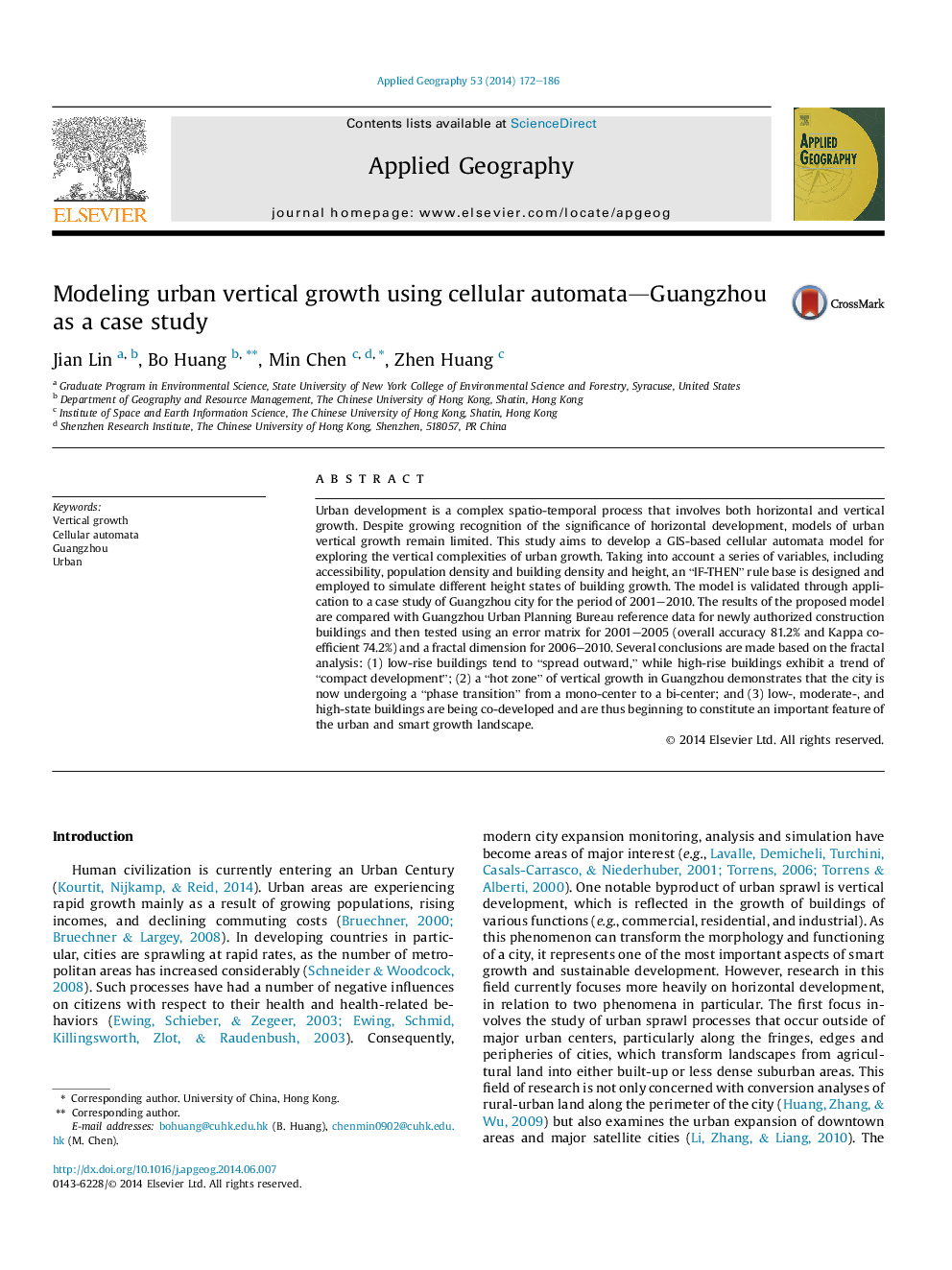| Article ID | Journal | Published Year | Pages | File Type |
|---|---|---|---|---|
| 6538711 | Applied Geography | 2014 | 15 Pages |
Abstract
Urban development is a complex spatio-temporal process that involves both horizontal and vertical growth. Despite growing recognition of the significance of horizontal development, models of urban vertical growth remain limited. This study aims to develop a GIS-based cellular automata model for exploring the vertical complexities of urban growth. Taking into account a series of variables, including accessibility, population density and building density and height, an “IF-THEN” rule base is designed and employed to simulate different height states of building growth. The model is validated through application to a case study of Guangzhou city for the period of 2001-2010. The results of the proposed model are compared with Guangzhou Urban Planning Bureau reference data for newly authorized construction buildings and then tested using an error matrix for 2001-2005 (overall accuracy 81.2% and Kappa coefficient 74.2%) and a fractal dimension for 2006-2010. Several conclusions are made based on the fractal analysis: (1) low-rise buildings tend to “spread outward,” while high-rise buildings exhibit a trend of “compact development”; (2) a “hot zone” of vertical growth in Guangzhou demonstrates that the city is now undergoing a “phase transition” from a mono-center to a bi-center; and (3) low-, moderate-, and high-state buildings are being co-developed and are thus beginning to constitute an important feature of the urban and smart growth landscape.
Related Topics
Life Sciences
Agricultural and Biological Sciences
Forestry
Authors
Jian Lin, Bo Huang, Min Chen, Zhen Huang,
